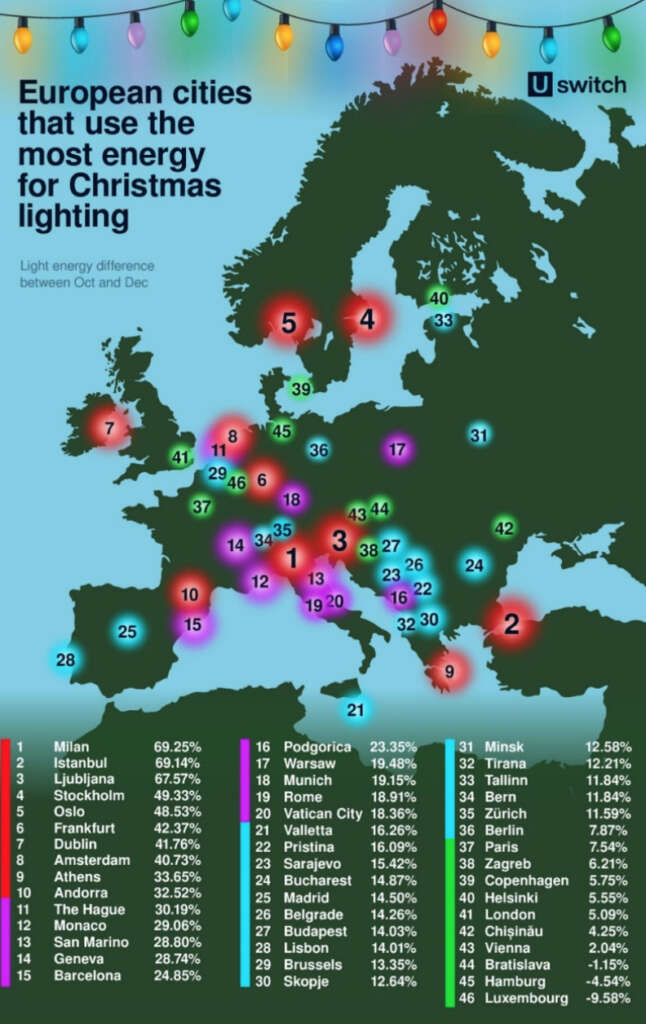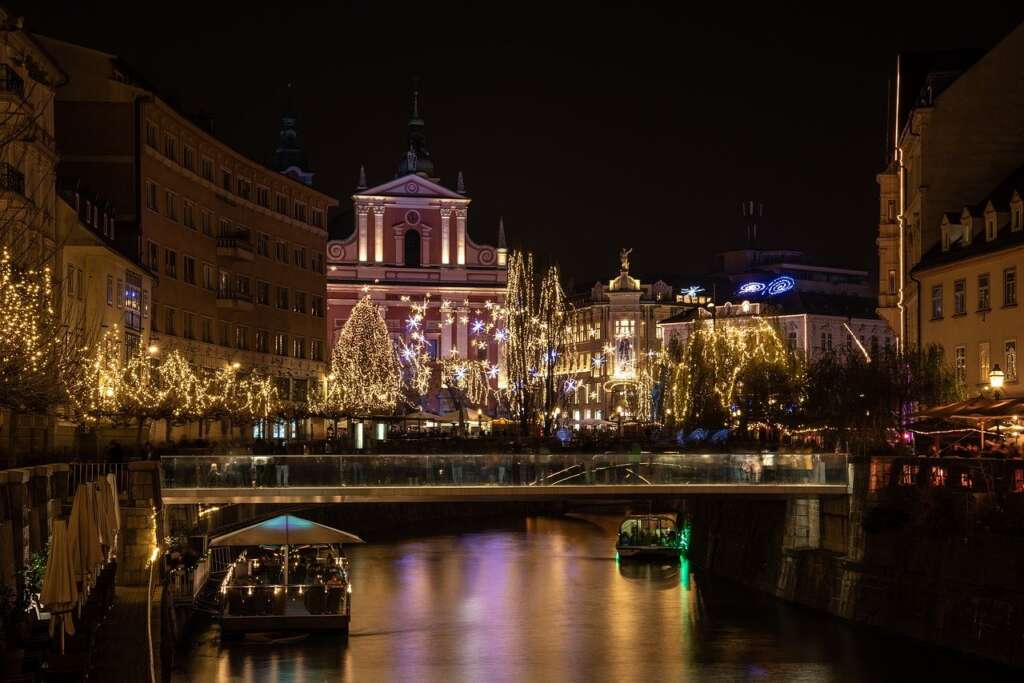As the festive season approaches, cities are getting dressed up with the finest Christmas decorations. There is even a little competition between them: which city can create the most magical atmosphere? Which city has the best Christmas market?
In this regard, several Central and Eastern European countries excel. The travel organisation European best destinations named Croatia’s Opatija, Moscow and Tallinn, capital of Russia and Estonia respectively, as the top three European cities with the best Christmas lights in 2021.
Although the lights can create a magical atmosphere, it should be also considered how much energy they consume. To answer that question, Uswitch, a price comparison service and website, based on night-time satellite data of NASA analysed the light energy consumption of European cities between October and December.
Their findings show that the light energy consumption of the most shining cities is 30-70 per cent higher during the festive period than in general, for example, around October.

As the map shows, the city with the highest light energy consumption is Milan. Italy’s second-biggest city uses over 1.5 times more lights in December than at any other time of the year. The lights are usually put up in November and last until January. Besides Christmas and New Year’s Eve, Milan celebrates also its Saint patron called Sant’ Ambrogio who is said to protect the city. So, there are multiple reasons to illuminate the Italian city in the month of December.
By comparing the luminosity of European cities, data show that in general, the cities that glitter the most are those located in the Northern and Western countries followed by Central European and then East-European ones.
Regarding Central and Eastern Europe, it is the capital of Slovenia that glows the most in the month of Santa. The illumination of the streets is a real project in Ljubljana. There are approximately 850 lighting sculptures and figures to create a sparkling atmosphere. Interestingly, the light energy consumption and the nomination Best Christmas lights do not always go hand in hand. None of the top three cities named as having the best Christmas lights are listed amongst the most consuming ones. It might be positive that several CEE cities – Bratislava, Chișinău and Zagreb are stated between those that use the least energy for illumination but still have a delightful Christmas vibe.

Although the city lights are charming, especially at the end of the year, their environmental impacts should not be ignored. Christmas lights add to the luminosity of a city which, in many cases, translates into light pollution. According to a research team of biologists at the University of Exeter, this has become a problem comparable to climate change. Their 2021 study shows that light pollution affects a wide range of animal species influencing hormone levels, reproductive cycles, animal activity and vulnerability to predators. In addition, another American research published in Science Magazine shows that nocturnal city lights affect the natural day-night cycle of plant development, preventing them from regenerating properly during the winter season and causing accelerated development that disturbs the plant-pollinator correspondence.
The extent to which Christmas lights actually contribute to light pollution is still a matter of debate and can of course vary from country to country. There are still limited data available about the subject. However, it has been shown that using LED lights instead of traditional ones can significantly decrease energy consumption. LED lights are considered to be more energy-efficient than incandescent bulbs as they turn 90 per cent of their energy into light. They do so by releasing electrons, so they do not lose heat, while older lightings glow a metal filament to produce energy.
Another option for cities to reduce their light energy consumption and its negative effects is to limit the period while the Christmas lights are on. This could be done in two ways: one of the options is to regulate how much time lights can be turned on per day. These kinds of laws already exist in Europe, for example, in France, but often they are not applied for Christmas lights. The other option is to install them later during the year, for example just for a month instead of two or two and a half.
Such steps – limiting the time period for Christmas lights and the time they are turned on a day- can be taken also by households without renouncing the magical atmosphere they create.
The most important and the easiest step is to switch them off before going to bed and when leaving the home. There is also the possibility to have a timer, so it is done automatically without requiring any special effort. These steps are not only energy-saving but also lower the energy bills.



